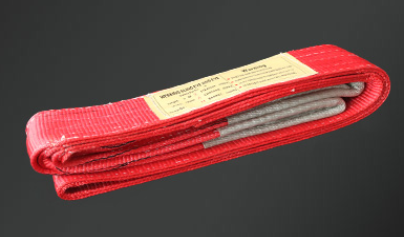Pay special attention when using the flat lifting belt, that is, it cannot be twisted and knotted, and the use of twisting and knotting will bring great potential safety hazards to the lifting operation.

Everyone is familiar with the shape of the flat sling. Its unique shape allows it to have a larger contact area when it is surrounding and fixing the target. The larger the contact area, the smaller the pressure. The design of the flat sling can greatly reduce the damage to itself and the lifting target. However, there is one situation that will still affect the safe use of the flat sling, that is, the twisting and knotting of the sling.
Torsion refers to the overturning of the lifting belt when it is used as a surrounding fixation. This will increase the pressure of the lifting belt on the weight and cause greater wear on both. In addition, the torsion itself will produce changes in internal stress. Even when the load is relieved, this deformation of the lifting belt will still affect the internal changes, thus reducing the life of the lifting belt.
Another is the knotting of the flat lifting belt. When using the lifting belt, it is more necessary to cooperate with the hook or ring. The use of knotting not only cannot ensure the tightness of the connection of the lifting belt, but also increases the friction between the lifting belts, bringing potential safety hazards to the lifting operation.
Therefore, when using the flat lifting belt, try to keep it in the most initial form, so as to ensure the safety of the lifting operation.